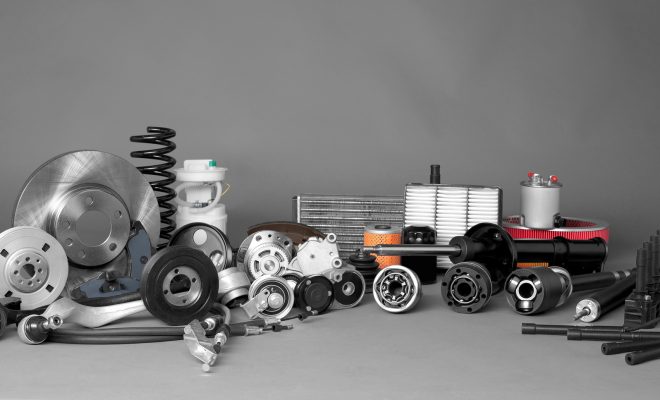Inside Singapore’s Auto Graveyards: The Untold Stories of Where Cars Go to Die

The scrap yard for cars on the outskirts of Singapore’s Jurong industrial district operates with the quiet efficiency of a well-oiled machine, processing the final chapter of automotive dreams that once cruised the island’s pristine highways. At dawn, as the tropical sun burns through the morning haze, workers begin their methodical transformation of yesterday’s prized possessions into tomorrow’s raw materials—a process that reveals as much about Singapore’s economic priorities as it does about the global recycling industry.
The Morning Ritual of Dismantling
By 7 AM, the automotive dismantling facility hums with activity. Workers in faded coveralls move between rows of vehicles with the practiced precision of surgeons, each carrying tools that will separate valuable components from worthless scrap. The air fills with the metallic symphony of cutting torches, hydraulic presses, and diesel engines—sounds that punctuate conversations conducted in a mixture of Mandarin, Tamil, and heavily accented English.
Raj Kumar, a 34-year-old dismantler from Tamil Nadu, has spent eight years perfecting his craft in Singapore’s vehicle recycling centres. “Every car tells a story,” he explains, running his hand along the dented bonnet of a once-pristine Mercedes. “Accident damage here, wear patterns there. I can read a car’s life like a book.” His expertise represents the kind of specialised knowledge that Singapore’s circular economy depends upon but rarely acknowledges.
The Numbers Behind the Operation
Singapore’s automotive recycling industry processes approximately 150,000 end-of-life vehicles annually, according to the Land Transport Authority. This represents a remarkable logistical achievement for a city-state smaller than many individual suburbs elsewhere. The Certificate of De-registration system ensures that virtually every vehicle eventually finds its way to authorised car breaking facilities, creating a controlled pipeline that maximises both economic and environmental benefits.
The financial scale is equally impressive:
- Annual Processing Volume: 150,000 vehicles generating approximately 180,000 tonnes of recoverable materials
- Recovery Rate: 95% of vehicle weight recovered through systematic dismantling
- Economic Value: Scrap metal exports worth approximately S$2.8 billion annually
- Employment: Thousands of direct jobs in dismantling, processing, and logistics
Yet these figures, compiled by government statisticians and industry associations, reveal little about the human stories that unfold daily within these facilities.
The Invisible Workforce
The workforce reveals Singapore’s migrant labour reality:
- Origins: Workers from India, Bangladesh, Myanmar, and Southeast Asia
- Living Conditions: Purpose-built dormitories with restricted social mobility
- Work Permits: Tied to specific employers and industries
- Economic Motivation: Wages modest by Singapore standards but substantial compared to home countries
Md. Rafique, 28, from Bangladesh operates hydraulic presses crushing car bodies for steel export. “My family thinks I work in a factory,” he explains. “They don’t understand what happens to cars after people finish with them.”
The Geography of Disposal
Singapore’s urban planning has relegated automotive disposal facilities to industrial zones far from residential areas, creating a spatial separation that mirrors social divisions. The Jurong and Tuas industrial estates house most of the island’s vehicle dismantling operations, their locations chosen for proximity to shipping facilities and distance from complaints about noise and visual pollution.
Singapore’s geographic isolation of disposal facilities serves multiple strategic purposes:
- Environmental Concentration: Heavy industry impacts contained in designated zones
- Property Values: Residential areas protected from industrial activities
- Aesthetic Control: Disposal reality hidden from urban core
- Logistical Efficiency: Proximity to shipping and export facilities
Environmental Accounting and Hidden Costs
The environmental benefits of Singapore’s automotive recycling system are substantial and well-documented. The National Environment Agency reports that proper dismantling prevents harmful fluids from contaminating soil and water, whilst material recovery reduces the need for virgin resources. Each tonne of recycled steel saves approximately 1,400 kilograms of iron ore, 740 kilograms of coal, and 120 kilograms of limestone.
However, these environmental gains come with costs that rarely appear in official calculations:
- Worker Health: Daily exposure to industrial chemicals, metal dust, and physical hazards
- Air Quality: Emissions from cutting torches, diesel equipment, and metal processing
- Noise Pollution: Industrial activities affecting surrounding communities
- Visual Impact: Landscapes of automotive debris in otherwise pristine Singapore
The Economics of Endings
Auto salvage yards function as the final marketplace for automotive capitalism, where the residual value of consumer investments gets extracted through manual labour. A luxury sedan that once cost S$200,000 new might yield S$3,000 in scrap value, with the difference representing depreciation, technological obsolescence, and the cost of disposal.
The price differential between new and salvaged parts creates opportunities for lower-income consumers to maintain older vehicles. A replacement transmission that costs S$8,000 new becomes available for S$2,000 used, making the difference between mobility and immobility for working families. This secondary market sustains a parallel economy that operates largely outside official economic statistics.
The Future of Automotive Disposal
Singapore’s electric vehicle transition by 2040 presents both challenges and opportunities:
- New Materials: Lithium, cobalt, and rare earth elements requiring specialised handling
- Safety Protocols: High-voltage systems demanding new dismantling techniques
- Workforce Development: Current workers needing retraining and new equipment
- Economic Questions: Whether transition creates opportunities or new uncertainties
The Stories Metal Tells
Late in the afternoon, as the day shift prepares to end, the sounds of dismantling gradually fade. Workers clean their tools, check equipment, and prepare for another day of transforming the dreams of yesterday into the raw materials of tomorrow. The rows of vehicles awaiting processing represent millions of journeys completed, family memories created, and economic aspirations realised and abandoned.
In the end, every scrap yard for cars in Singapore serves as both cemetery and nursery—a place where automotive stories end and new ones begin, maintained by workers whose own stories remain largely untold despite their essential role in keeping the island’s circular economy functioning.








